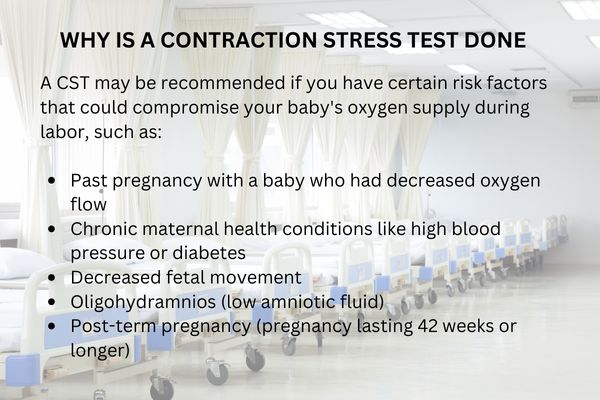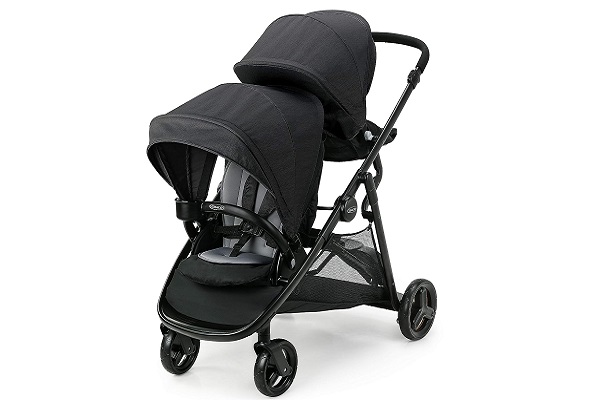During pregnancy, a woman’s body goes through many remarkable changes, preparing for the miracle of childbirth. However, it’s natural to have concerns about your baby’s well-being, especially as the due date approaches. One way to assess your baby’s health and readiness for labor is through a contraction stress test (CST).
Disclaimer
The information provided in this article is for educational purposes only and should not be construed as medical advice. Always consult with your healthcare provider for personalized recommendations and guidance regarding your specific pregnancy and any concerns you may have. This article does not constitute a comprehensive review of all available information on contraction stress tests. Readers are encouraged to consult additional resources and seek professional medical advice.
What is a Contraction Stress Test?
A contraction stress test is a prenatal test that evaluates your baby’s heart rate response to contractions. It helps doctors determine if your baby is receiving enough oxygen during contractions, which is crucial for their well-being during labor.
Why is it done?

How is it done?
A CST is typically performed at a doctor’s office or hospital in an outpatient setting. The test usually takes about 30-60 minutes, and may involve the following steps:
- Positioning: You’ll lie on your side on an examination table. A pillow may be placed under your right hip to further improve fetal positioning for optimal heart rate monitoring.
- Monitoring: Two belts with external sensors are placed around your abdomen. One belt monitors your baby’s heart rate, while the other one records your contractions.
- Stimulating contractions: In most cases, contractions are stimulated with a synthetic hormone called oxytocin administered through an IV drip. In some cases, natural methods like nipple stimulation may be used if you’re already having regular contractions.
- Recording data: Your baby’s heart rate and your contractions are continuously monitored and recorded on a graph. The test continues until at least three contractions have occurred within a 10-minute window.
Interpreting the results
There are three main categories of CST results:
- Reactive: This is the most reassuring result, indicating that your baby’s heart rate accelerates briefly with each contraction and then recovers quickly. It suggests that your baby is tolerating contractions well and receiving adequate oxygen.
- Non-reactive: This result signifies that your baby’s heart rate either doesn’t accelerate with contractions or accelerates minimally and slows down slowly. It may require further investigation through additional tests or closer monitoring during labor.
- Inconclusive: If the test is inconclusive, it may need to be repeated or supplemented with other monitoring methods.
Benefits of a Contraction Stress Test
A CST can provide valuable information about your baby’s well-being and help doctors make informed decisions regarding your labor management. It can:
- Reassure you and your doctor about your baby’s health and readiness for labor.
- Identify babies who may be at risk of decreased oxygen supply during labor, allowing for closer monitoring or intervention if necessary.
- Help determine the timing and method of delivery based on the test results.
Limitations of a Contraction Stress Test
It’s important to remember that a CST is just one piece of information and cannot definitively predict how your baby will do during labor. Other factors, such as the length and intensity of labor, can also play a role. Additionally, CSTs can sometimes be inconclusive or falsely reassuring.
Also check: Easing Tailbone Pain during Pregnancy
Conclusion
A contraction stress test is a valuable tool in assessing your baby’s well-being and preparedness for labor. While it should not be solely relied upon for making delivery decisions, it can provide important information to help guide your doctor’s recommendations and give you peace of mind as you approach childbirth.
Talking to your doctor
If you have any concerns about your pregnancy or your baby’s health, be sure to talk to your doctor. They can explain the risks and benefits of a contraction stress test and determine if it’s right for you.





